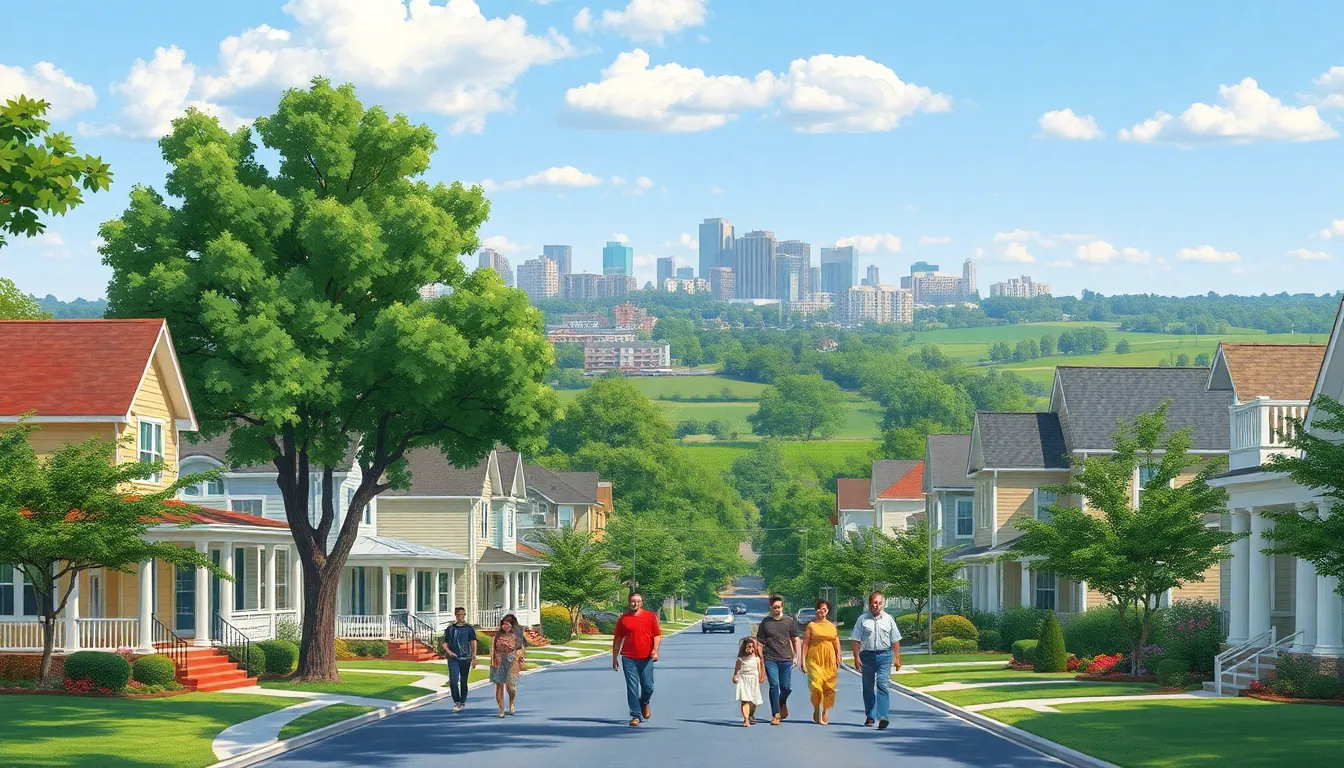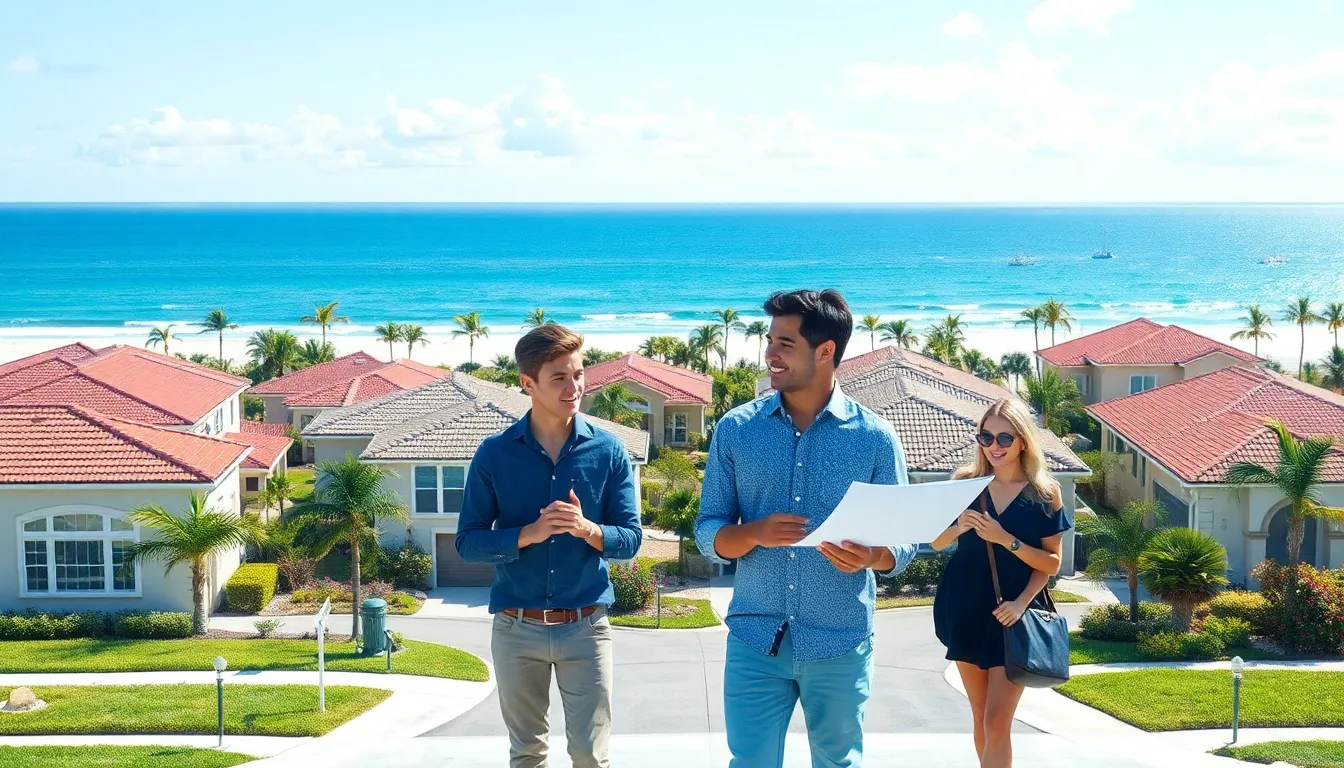The Hawaii housing market is like a piña colada on a sun-soaked beach—refreshing yet complex. With its stunning landscapes and vibrant culture, it’s no wonder everyone dreams of owning a slice of paradise. But before packing those flip-flops and sunscreen, potential buyers should know that navigating this market can feel like surfing a giant wave—thrilling but tricky.
Table of Contents
ToggleOverview of the Hawaii Housing Market
The Hawaii housing market remains dynamic and competitive. High demand fuels rising prices, particularly in popular areas like Honolulu and Maui. Inventory levels often fluctuate, leading to challenges for potential buyers seeking affordably priced homes. Investors find the market appealing due to its strong rental potential and tourism-driven economy.
Condominiums and single-family homes dominate the market, with median prices for single-family homes reaching approximately $1 million. According to the Hawaii Association of Realtors, sales data shows that homes in desirable neighborhoods often sell within days, indicating a fast-paced environment. Notably, cash buyers play a significant role, making up a substantial portion of transactions.
First-time homebuyers experience unique challenges in this market. High competition raises the stakes, making it crucial to act quickly when opportunities arise. Many buyers are drawn to Hawaii’s natural beauty and cultural richness, enhancing their desire to invest in properties.
Government initiatives seek to address housing shortages and affordability. Programs designed to assist low-to-moderate-income buyers provide some relief, yet many still struggle with high prices. Investors often prioritize rental properties, contributing to greater demand for long-term leases.
Overall, the interplay of factors shapes the Hawaii housing market, presenting both excitement and obstacles for stakeholders. Buyers interested in pursuing homeownership must navigate this complex landscape while remaining aware of market trends and challenges.
Current Trends in Hawaii Real Estate

Hawaii’s real estate market displays notable trends, driven by demand that consistently shapes buyer behavior.
Median Home Prices
Median home prices in Hawaii have reached approximately $1 million for single-family homes. Prices vary across different islands, with Honolulu typically reflecting the highest values. The allure of Hawaii, coupled with limited supply, contributes to elevated pricing. Condominiums offer slightly lower price points, but they remain competitive. Buyers seeking homes in desirable areas often encounter swift sales, often within days of listing. High-value properties attract cash buyers, reinforcing price stability in the market.
Inventory Levels
Inventory levels in Hawaii fluctuate significantly, impacting buyer opportunities. Many areas suffer from low inventory, heightening competition among potential homeowners. As of late 2023, certain neighborhoods report inventory depletion, making affordable options scarce. New construction projects aim to alleviate these shortages, yet they cannot meet current demands entirely. This trend complicates the buying process for those hoping to find suitable homes. Potential buyers must remain vigilant and proactive, as the market dynamics shift rapidly.
Factors Influencing the Market
Several factors play a significant role in shaping the Hawaii housing market. Economic conditions and demographic trends greatly impact demand and pricing in this competitive landscape.
Economic Influences
Economic health directly influences the Hawaii housing market. Job growth fuels demand as more people move to the islands seeking employment opportunities. In 2023, Hawaii’s unemployment rate averaged around 3%, contributing to heightened interest in homeownership. Additionally, tourism remains a crucial economic driver, with over 10 million visitors annually boosting local economies and influencing real estate demand. High median incomes, especially in affluent areas, enable buyers to participate actively in the market. Mortgage interest rates also significantly impact affordability; even minor fluctuations can shift buyer behavior. The overall performance of the global and local economy continuously affects property values.
Demographic Trends
Demographic trends are pivotal to understanding Hawaii’s housing dynamics. An increasing number of remote workers drawn to the islands adds a unique layer of demand, changing traditional homebuying patterns. Young professionals and families are seeking properties that accommodate their lifestyle needs. The state’s aging population also influences market dynamics, with retirees looking for lower maintenance options. Moreover, the multicultural population creates diverse needs and preferences for housing types. In recent years, significant growth in population has emerged in areas like Maui and Oahu, where younger generations are investing in their first homes. Understanding these demographic shifts helps illuminate the evolving needs of the market.
Popular Areas for Buyers
Hawaii offers diverse regions that appeal to various buyers. Each island boasts unique characteristics, making the decision easier for those seeking their ideal home.
Oahu
Oahu remains a prime destination for many buyers. Honolulu, the island’s capital, features vibrant urban living alongside stunning beaches. Median home prices in Honolulu approach $1 million, reflecting high demand and limited inventory. Notable neighborhoods, such as Waikiki and Kailua, attract both residents and investors due to their convenience and charm. Buyers seeking a mix of culture and lifestyle find Oahu’s offerings irresistible.
Maui
Maui captures attention with its breathtaking landscapes and laid-back vibe. The island’s median home prices also hover around $1 million, but varied options exist, including picturesque condos and spacious single-family homes. Lahaina and Kihei emerge as popular choices, offering both affordability and access to essential amenities. Buyers often appreciate the balance between outdoor activities and community atmosphere in these areas. A burgeoning interest in eco-friendly developments further enhances Maui’s real estate appeal.
Big Island
Big Island stands out for its diverse climates and landscapes. Home prices tend to be lower compared to Oahu and Maui, with a median price close to $500,000. Areas like Kona and Hilo provide unique opportunities for buyers seeking coastal living or lush environments. Availability of more spacious lots and lower density attracts families and retirees. The island’s ongoing development projects cater to newcomers, showcasing the increasing demand for sustainable living options.
Navigating the Hawaii housing market requires a blend of enthusiasm and caution. With its breathtaking scenery and vibrant culture the appeal of owning a home in this paradise is undeniable. However potential buyers must remain vigilant in a landscape marked by high demand and fluctuating inventory.
As economic factors and demographic trends continue to shape the market understanding regional nuances is essential for making informed decisions. Whether one is a first-time buyer or an investor the journey through Hawaii’s real estate landscape is filled with both challenges and opportunities. Embracing this dynamic environment can lead to rewarding experiences in one of the most sought-after destinations in the world.






